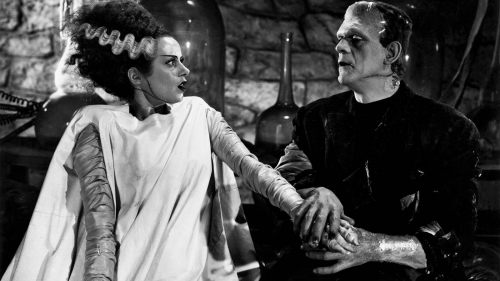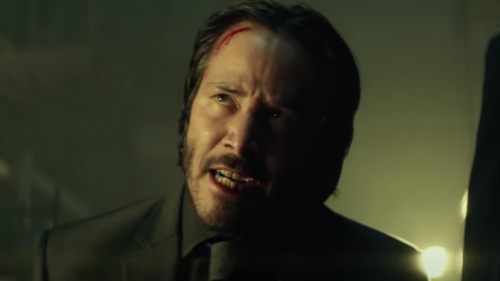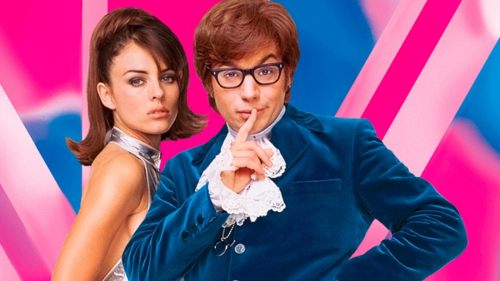Massive Head Wound Harry And The Brilliance Of Early ‘90s SATURDAY NIGHT LIVE
SATURDAY NIGHT LIVE is a fascinating time capsule of what people at different ages think is funny. It’s a show that everybody through, well, a few generations of teenagers watched every Saturday night more or less without fail; the cool and uncool alike knew what happened - the big laughs, the guest stars, the musical acts - on Monday mornings during homeroom. In fact, there’s a consistent and direct correlation between what cast (or cast members) each person chooses as their favorite and the ones they watched during those pivotal adolescent years, when the show offered late-night, borderline “adult” pleasures to viewers who only recently earned, or sneaked, permission.
I was born the year the show debuted, which makes “my” favorites the cast members who appeared in the late 1980s and early ‘90s - a murderer’s row of comedians who graduated to more and bigger opportunities on screen, even if bigger didn’t always mean better. Late last week, SNL’s Twitter account shared a clip from November 1991’s “Massive Head Wound Harry,” a single-serving sketch about a brained individual who wreaks havoc on a cocktail party, disgusting the other guests (and viewers). The scene culminates, hilariously, in a showdown between Harry and a hungry dog that decides his head wound is a tasty snack.

(Editor's Note: It appears NBC has not made 1991's "Massive Head Wound Harry" sketch available in embeddable video form, and the versions we found on YouTube were either janky as hell or unavailable in the States. Therefore, we must direct you to NBC's official video page if you'd like to see it. And you should want to see it, even if you already have.)
This was a prime “Todd’s era” sketch, and as I soon discovered, a favorite among a number of colleagues around the same age. The rabbit hole of other sketches from that era opened its gaping maw and I dove right in, as they’re carefully (if not always completely) catalogued on the NBC.com website. But what quickly emerged as I searched for bits, build-ups and payoffs from sketches was how many of them were still firmly lodged in my memory - and to one extent or another, a generation’s collective consciousness. The speed, frequency and creativity of great material coming from the writers and performers working on SATURDAY NIGHT LIVE during that era rivals any before or since - to fully embrace my own persistent belief. And “Massive Head Wound Harry” and the sketches, shows, cast and crew around it feel like a bellwether for the way not only that the show changed in that period, but has evolved since, set a template for copycats and imitators, and formalized comedy conventions that still endure today.

There are, of course, enduring comedy bits from the very beginning of SATURDAY NIGHT LIVE that also entered the popular consciousness. “Land Shark,” “Two Wild And Crazy Guys,” “Little Chocolate Donuts,” “Mr. Robinson’s Neighborhood” and many others linger today. But where the show failed to make as deep an impression in the 1980s, cast members hired at the tail end of the decade found new footing as television, cable programming, and commercials solidified into boilerplate ready for parody. It feels almost as if some of the “types” the show created were formalized in culture itself, elevating what might have been a funny bit into a classic caricature or parody.
Dana Carvey, the “star” of “Massive Head Wound Harry,” joined the cast in 1986, and hit his stride quickly. By the time Mike Myers joined two years later, Carvey was one of the show’s stars, thanks to his facility with impersonations, even as he would take co-starring roles (as in the “Wayne’s World” series). Even something like “Two Old Men” could grow into a recurring hit sketch, purely by virtue of his energy and commitment to a character. But what allows it and its sequels to hold up today is that it narrowly defined a type and dug in; even if you weren’t laughing out loud during the sketch, it lent itself easily to imitation - key for teenagers trying to entertain classmates - but more than that, it spoke to a mindset that people either could vaguely relate to or at least identify.

As multi-camera sitcoms exploded in popularity in 1980s, these types became even more sharply defined, and SNL and its competitors were skewering their formulas. Myers’ “Middle-Aged Man” was the granddad of what we now reflexively call Dad Jokes, while also shading in the bullet-pointed characteristics of what a man entering middle age was, would or should be like. It’s not so much that earlier caricatures - on SNL and elsewhere - were inaccurate, or unfunny. But it feels like SNL’s team learned how to skew younger, and broader, in terms of relatability. To a person of that age group, there’s vague (or specific) identification. To younger people, there’s a sense of “that’s what that is probably like” or “what I imagine, anyway.” As always, the humor traded on stereotypes, but the cast and crew seemed to dial in on what really captivated us about that type, and then preyed on it for comedy.
“Massive Head Wound Harry” is formatted like a sitcom - a gory Mr. Magoo, theoretically - and amplifies our expectations to a horrific level. “Wayne’s World” plays like adequately scruffy, charming and frequently awkward cable access (from Aurora, Illinois). “Church Chat” is overblown with disapproving, stentorian authority as Carvey’s Church Lady passes judgment while hinting at repressed kink itching to get out. They used the increasingly familiar language of this already condensed, short-form storytelling and characterization to connect with audience, and of course crack us up.

And the time period from 1988-1993 on SNL became a training ground for the show’s comedians to develop their own personas and styles while overlapping with their co-stars. Chris Farley vacillated between playing oafish buffoons and endearing idiots; his “Chippendales Audition” skit ranks among the show’s very best not because it pivots on his corpulent physique and perhaps expected awkwardness but because opposite Patrick Swayze, not just an athletic hunk but a trained dancer, Farley was lithe, rhythmic, and actually pretty great as a prospective male dancer. His was always an impressive display of athleticism, whether he’s mirroring dance choreography or mimicking a heart attack in a “Bill Swerski’s Super Fans” sketch. But he exuded a vulnerability that made his brutishness and stupidity funny, and even sympathetic.
On the same November 16, 1991 episode on which “Massive Head Wound Harry” appeared, he starred in “Schiller’s Visions: Hidden Camera Commercials,” where he reacts explosively to the discovery he’s been given a different kind of coffee than promised. “Unfrozen Caveman Lawyer” ran a week later. “Schmitts Gay,” where Farley and Adam Sandler play a pair of gay bachelors living their hunkiest housesitting fantasies a la the terrible, sexist beer ads of the day, ran just a few weeks later. Not only is the commercial very funny in skewering commercial cliches, but its humor doesn’t come at the expense of the characters or being gay.

In short, the show was spitting hot fire for several consecutive years, restoring the show’s pedigree and showcasing what would become the next generation of comedy superstars. Their work became the template that defined the show and quite frankly set a standard that subsequent casts have attempted to match. (Whether or not they succeeded is subjective, but certainly in an increasingly crowded landscape of competitors, the rise of the internet and the welcome diversification of comedy not just as a showcase but via different styles, the show has struggled to maintain its same popular relevance.)
But at the same time, what the show created then seemed to etch itself in the cultural ether. It became a shared language between the folks who watched the series and then later, worked their way into the mainstream. A shorthand for the things that made us laugh that annoyed us, that we recognized in the behavior of friends, family, and colleagues. And for me and the SNL fans of my generation, that started with material like “Massive Head Wound Harry.” And that’s precisely why this material holds up so beautifully today: it started as a staple of our entertainment diet, and became an integral part of the language of our lives.



